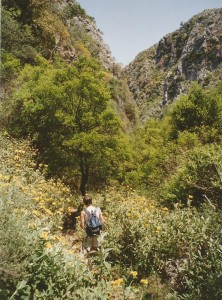 Inevitably, after five years and approaching seventy articles, “Explore” will move further away from, but always within easy reach of Paleochora. The walk through the Sirikari Gorge to Polyrrinia is a case in point, with a scenic drive of 45km through Dris and Strovles to Topolia, then branching left through Aikirgiannis and Kalathenes to park 1 km beyond Sirikari at the prominent church of Ag. Konstantinos, well worth the hour or so it takes to reach there.
Inevitably, after five years and approaching seventy articles, “Explore” will move further away from, but always within easy reach of Paleochora. The walk through the Sirikari Gorge to Polyrrinia is a case in point, with a scenic drive of 45km through Dris and Strovles to Topolia, then branching left through Aikirgiannis and Kalathenes to park 1 km beyond Sirikari at the prominent church of Ag. Konstantinos, well worth the hour or so it takes to reach there.
The way-marked path from here to Polyrrinia is one of the easiest gorge walks in Crete, contouring above the valley, reaching the end in c. 1.5 hours, with a further half hour into the village. Then there is, if you’ve driven there, the problem of how to get back. Lynne and I solved this by driving to Kastelli, and once taking a taxi to Sirikari, another time reaching the village by bus. Tavernas in Polyrrinia will arrange a taxi to Kastelli, another couple of hours away on foot. You could always walk back the same way, or alternatively return by the Koliana Gorge (see below.) Best of all is for a kind friend to drive you there, and meet you later in Polyrrinia.
Having sorted all this out, let’s set off, through the gate opposite the church, then following green waymarking, steeply at first, on a path down through mixed woodland to another gate and a wider track. (Note this point if you return the same way.) Then turn right, passing a farmhouse, beyond which the path leads gently down the valley. Below, and across the valley, is Sineniana, picturesque but isolated.
The path meets the stream at a well-sited picnic table, rises to pass a wooden memorial plaque (another wartime atrocity took place here), then drops to a narrow stone bridge, reminiscent of British “pack-horse” bridges, and a smaller version of the one at Mahia.
The Koliana Gorge enters from the right here, a useful (and enjoyable, but longer and more arduous) route back to the start. It will take two hours, keeping mainly to the streambed, waymarked with red dots, intermittent at first but clearer towards the end. As a bonus, it finishes at “H Kactania”, where you can rest, before a 10-minute walk back to your car. See ‘footnote’.
From the stone bridge, a track becomes a road and leads to Polyrrinia, where you can easily spend a whole afternoon exploring the village and antiquities, as well as climbing to the Acropolis, at 420m, for a magnificent view over Kissamos Bay.
Dating back to Minoan and Mycenaean eras, Polyrrinia became an important city under Dorian rule, and similarly later during the Roman occupation. The fortification walls were repaired during the Byzantine period, and later during the Venetian rule. It’s a fascinating place to wander around, with signs indicating Roman aqueducts still in use today, beautiful Venetian archways, and the more recent (1894) Church of the Holy Fathers.
There are several tavernas for refreshments, and if open, the “Old Kafenion” is recommended for English-style afternoon tea & cakes, as well as being an Information Point for the village.
Footnote
Before reaching Ag. Konstantinos, or on your return, be sure to call in at “H Kactania” (meaning ‘chestnuts’) in Sirikari village. Stelios and Argyro will make you most welcome, and tell you more about this delightful area whilst you relax with coffee at the start, or sample their own ‘raki’ at the end of your walk.

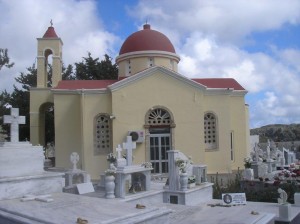
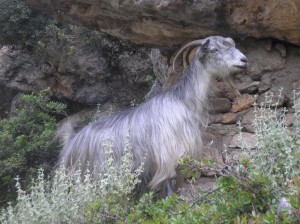
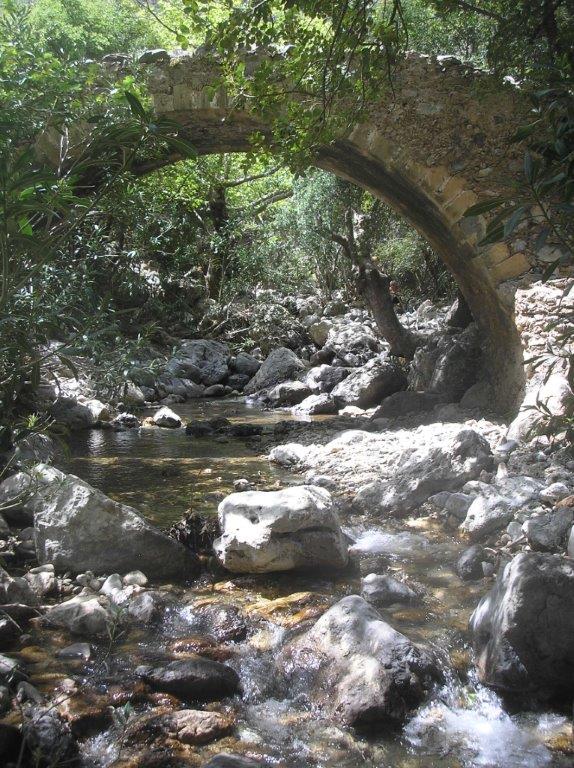

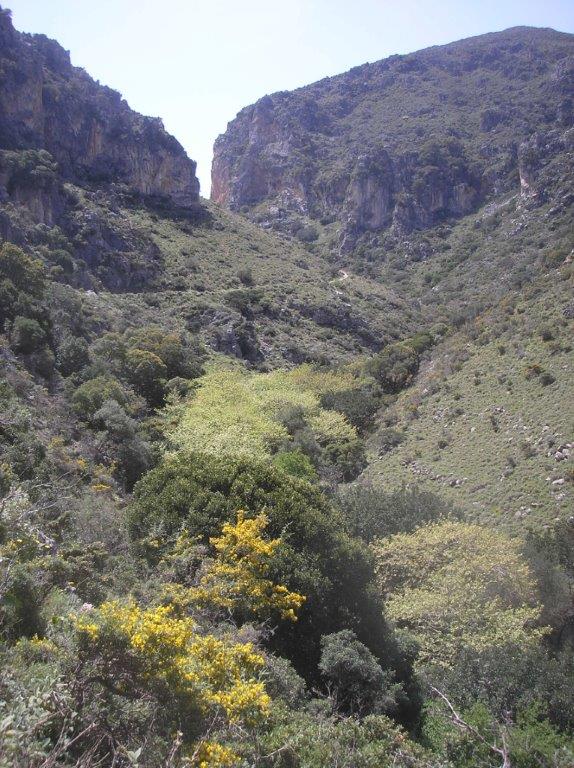
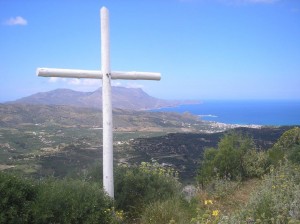
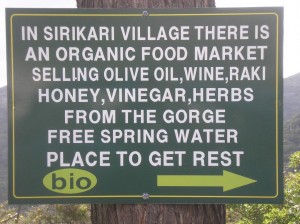

Recent Comments